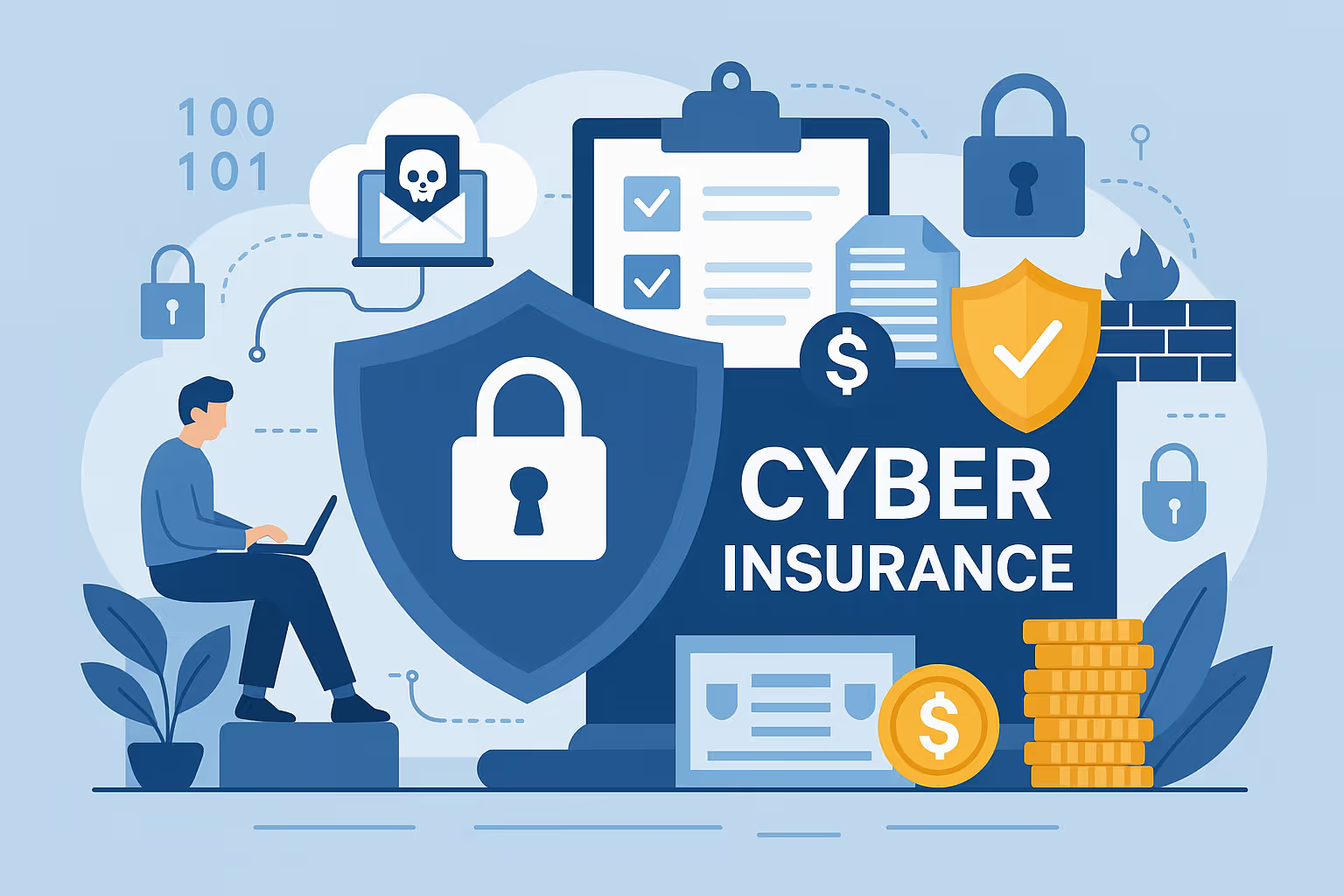
How to get...
In guiding companies in the Telecommunications / ISPs sector in the United States, here is a concise yet profound process on how to get cyber insurance for Telecommunications / ISPs, breaking down each stage with specific actions, required documentation, and the reasons behind each step.

Who provides...


Why need...
Embracing cyber insurance for Telecommunications / ISPs is not only about risk transfer; it also encourages implementing strong cybersecurity measures, robust incident response plans, and comprehensive risk management strategies. This dual approach is indispensable to protect extensive networks and maintain service integrity in this critical industry.
For cyber insurance coverage for Telecommunications / ISPs, Data Breach / Privacy Liability protects against costs associated with unauthorized access to subscriber data and personally identifiable information. This coverage includes expenses for incident response, customer notification, credit monitoring, legal fees, and public relations efforts after a breach.
This coverage matters for Telecommunications / ISPs because breaches can expose millions of customer records, severely damaging reputation and consumer trust. It directly impacts financial security by mitigating unexpected costs and supporting compliance with strict privacy regulations, such as state-level data protection laws and contractual obligations with business clients.
Business Interruption coverage under cyber insurance coverage for Telecommunications / ISPs addresses revenue loss and increased operating costs when cyber incidents disrupt network operations. This includes compensation for service downtime, backup system activation, and expenses related to restoring full service capabilities.
This is critical for Telecommunications / ISPs since continuous availability is central to the core service. Operational disruptions can lead to significant financial setbacks, service-level agreement (SLA) breaches, and lost customer confidence. The coverage ensures resilience against cyberattacks, sustaining business operations and maintaining regulatory compliance.
Cyber Extortion / Ransomware coverage within cyber insurance coverage for Telecommunications / ISPs manages financial risks associated with extortion attempts and ransomware attacks. It covers expenses related to ransom payments, negotiation processes, cybersecurity forensics, crisis management, and system restoration services.
Due to the high dependence on robust, uninterrupted network operations, Telecommunications / ISPs are prime targets for ransomware, making this coverage essential. It supports rapid recovery, minimizes operational downtime, and reduces the broader financial impact of cyber threats by providing the expertise required to navigate complex extortion scenarios.
Regulatory Defense & Fines coverage in the framework of cyber insurance coverage for Telecommunications / ISPs provides protection against legal expenses, settlements, and penalties arising from regulatory enforcement actions after a cyber incident. This includes costs for legal defense, negotiations with regulators, and fines imposed under various federal and state data security laws.
This coverage is essential for Telecommunications / ISPs due to the heightened regulatory scrutiny and the sensitive nature of data transmitted over their networks. By alleviating the financial burden of legal and regulatory processes, companies can maintain operational stability and demonstrate robust compliance with evolving industry standards and legislation.
Build Security with OCD Tech That Meets the Standard — and Moves You Forward
Contact Us
US telecoms/ISPs need robust cyber controls to secure insurance. Underwriters assess data defenses, safeguarding critical networks.
Secure Your Business with Expert Cybersecurity & Compliance Today
Contact Us


Differences by State...
For companies in the Telecommunications / ISPs sector, navigating the varied state-level regulations is crucial when selecting cyber insurance for Telecommunications / ISPs. The following outlines the most important differences across key states:
These differences influence how organizations evaluate, purchase, and maintain their policies. In New York, for example, a firm must invest more significantly in cybersecurity infrastructure and demonstrate ongoing compliance to secure optimal coverage at reasonable premiums. Conversely, while the regulatory demands in Texas might be less intense, there remains a need for detailed risk assessments and contingency planning that align with regional threats.
A keen understanding of these state-specific requirements empowers telecommunications companies and ISPs to make informed decisions when purchasing cyber insurance. By tailoring risk management practices to meet both local and broader regulatory demands, firms can ensure strong protection against cyber threats while optimizing cost efficiency.

Compliance & Frameworks...
For companies in the Telecommunications / ISPs sector in the United States, obtaining cyber insurance for Telecommunications / ISPs involves careful adherence to several compliance frameworks and regulations. These standards not only help organizations maintain robust cybersecurity defenses but also significantly influence underwriting requirements and premium costs. Below are the most important areas to consider:
Each of these compliance standards plays a vital role in shaping cyber insurance for Telecommunications / ISPs by:
By aligning with these frameworks and regulations, Telecommunications/ISPs not only qualify for competitive cyber insurance rates but also build a resilient infrastructure capable of withstanding evolving cyber threats.

Audit. Security. Assurance.
IT Audit | Cybersecurity | IT Assurance | IT Security Consultants – OCD Tech is a technology consulting firm serving the IT security and consulting needs of businesses in Boston (MA), Braintree (MA) and across New England. We primarily serve Fortune 500 companies including auto dealers, financial institutions, higher education, government contractors, and not-for-profit organizations with SOC 2 reporting, CMMC readiness, IT Security Audits, Penetration Testing and Vulnerability Assessments. We also provide dark web monitoring, DFARS compliance, and IT general controls review.
Contact Info
.svg)
OCD Tech
.svg)
25 BHOP, Suite 407, Braintree MA, 02184
.svg)
844-623-8324
.svg)
https://ocd-tech.com
Follow Us
Videos
Check Out the Latest Videos From OCD Tech!
Services
SOC Reporting Services
– SOC 2 ® Readiness Assessment
– SOC 2 ®
– SOC 3 ®
– SOC for Cybersecurity ®
IT Advisory Services
– IT Vulnerability Assessment
– Penetration Testing
– Privileged Access Management
– Social Engineering
– WISP
– General IT Controls Review
IT Government Compliance Services
– CMMC
– DFARS Compliance
– FTC Safeguards vCISO